Dive into the captivating realm where the ocean embraces the land – the intertidal zone. This extraordinary ecosystem pulsates with the rhythm of the tides, harboring a diverse array of creatures that have mastered the art of survival in this ever-changing environment. Get ready to explore the secrets of this hidden world and meet the resilient inhabitants that call it home.
Intertidal Zone Facts
Imagine the shoreline as a giant bathtub, filling and draining twice a day with the ebb and flow of the tides. This is the intertidal zone, a captivating world where land and sea converge. It’s a place of dramatic contrasts – baking under the sun one moment and submerged beneath cool seawater the next.
This constant change presents unique challenges for the plants and animals that inhabit this dynamic zone. They must withstand dramatic shifts in temperature, salinity, and moisture, making the intertidal zone a testament to the incredible adaptability of life.
Barnacles cling tenaciously to rocks, mussels anchor themselves with super-strong threads, and seaweeds dance with the currents. It’s a bustling community where survival depends on resilience, adaptation, and a bit of luck.
But the intertidal zone is more than just a spectacle of nature’s drama; it’s an ecological powerhouse. This narrow band acts as a bridge between the land and the ocean, playing a crucial role in carbon cycling, which helps regulate our climate, and nutrient exchange, essential for maintaining healthy oceans.
What Makes the Intertidal Zone So Unique?
Let’s delve deeper into the fascinating world of the intertidal zone and uncover what makes it so extraordinary:
1. A Rollercoaster of Conditions
Imagine a sauna that transforms into a refrigerator in a matter of hours. That’s the reality for intertidal inhabitants. The tides bring about extreme temperature swings, exposing creatures to the scorching sun at low tide and plunging them into chilly waters as the tide returns.
Salinity, too, is a constant balancing act. Rushing seawater creates a highly saline environment, which is then diluted by rainfall, leaving organisms to cope with these dramatic shifts.
2. A Marvel of Adaptation
Life in the intertidal zone demands resilience. The creatures here have evolved remarkable adaptations to not only survive but to thrive in this challenging environment. Some, like certain snails, possess the remarkable ability to breathe both air and water. Others sport tough shells, providing protection from the sun’s relentless rays and the pounding surf.
Scientists are continually amazed by the ingenious ways these organisms have adapted. Ongoing research continues to uncover new and fascinating insights into their survival strategies.
3. An Ecological Powerhouse
Don’t underestimate the importance of this seemingly narrow strip of land. The intertidal zone is a vital component of the larger coastal ecosystem. It supports an astounding diversity of life and plays a critical role in the health of our planet.
For instance, the intertidal zone serves as a nursery for many fish species. They seek refuge in these sheltered waters to lay their eggs, giving their offspring a better chance of survival.
The intertidal zone is a world of wonder and complexity. From the tiniest creatures to its vast ecological significance, scientists are still working to unlock all its secrets. So, the next time you’re at the beach, take a moment to appreciate the marvels of the intertidal zone – a testament to nature’s resilience and the interconnectedness of life on Earth.
Three Fascinating Facts About the Intertidal Zone
We’ve already glimpsed the wonders of the intertidal zone, but let’s dive a little deeper and uncover some intriguing tidbits about this unique ecosystem.
Firstly, the intertidal zone is in a constant state of flux, transitioning between a watery world and an exposed shoreline twice a day. This constant push and pull of the tides create extreme environments with fluctuating temperatures, salinity, and wave exposure.
Secondly, the intertidal zone is teeming with life, each species equipped with unique adaptations to survive. Barnacles cling tenaciously to rocks, mussels filter food from the water with remarkable efficiency, and crabs scuttle about, scavenging for sustenance. Each creature plays a crucial role in maintaining the delicate balance of this dynamic ecosystem.
Lastly, not all intertidal zones are created equal. Just like forests, they vary depending on location. The geography of a region significantly influences the types of plants and animals that inhabit the intertidal zone. Factors like coastline shape, rock formations, and water temperature all contribute to the unique characteristics of each intertidal community.
Scientists are still unraveling the mysteries of the intertidal zone, but one thing is certain – it’s a fascinating area of research that can teach us about adaptation, resilience, and the intricate interconnectedness of ecosystems.
The Uniqueness of the Intertidal Zone
What sets the intertidal zone apart is its constant state of transition, shifting between a marine haven and an exposed shoreline with each tidal cycle. Twice a day, the tides transform this zone, creating a unique habitat that demands remarkable resilience from its inhabitants.
But the true marvel of the intertidal zone lies in the adaptive prowess of its inhabitants. These creatures have evolved incredible strategies to cope with the relentless challenges of this dynamic environment.
Let’s explore some of the challenges and how these resilient organisms have adapted:
Desiccation (Drying Out)
Imagine being a sea creature suddenly exposed to the drying air. Many intertidal organisms have developed ingenious ways to combat dehydration. Some, like snails and barnacles, can seal themselves tightly within their shells, conserving moisture. Others, like certain seaweeds, secrete a slimy coating that helps prevent water loss.
Temperature Swings
The intertidal zone experiences extreme temperature fluctuations. When the tide recedes, the sun can bake the exposed shoreline, while incoming tides bring a rush of cold water. Many animals have evolved special proteins that allow them to function across this wide temperature range. Some even change their behavior, seeking shade or burrowing into the sand to regulate their body temperature.
The Force of Nature
Crashing waves, shifting tides, and strong currents are a constant challenge for intertidal inhabitants. To survive, many have mastered the art of camouflage, blending seamlessly with their surroundings to avoid becoming a tasty snack. Others, like mussels, employ super-strong threads, called byssal threads, to anchor themselves firmly to rocks, preventing them from being swept away by the relentless currents.
Thriving in a Crowded Home
Despite these challenges, the intertidal zone teems with life. This biodiversity hotspot is home to colorful sea stars, anemones that sway with the currents, scuttling crabs, and darting fish. These creatures have adapted to share resources, employing unique defense mechanisms, and even capitalizing on the changing tides to find food.
Human Impact: A Growing Concern
While the creatures of the intertidal zone are masters of adaptation, human activities pose a significant threat. Pollution from runoff and litter, habitat destruction caused by coastal development, and the far-reaching effects of climate change are all taking a toll on this delicate ecosystem.
Understanding the impacts of our actions is crucial for protecting this fascinating and ecologically important part of our planet. Exploration and research into the intricate relationships between species, their remarkable adaptations, and the best ways to protect them continue to be vital areas of study.
Three Major Threats to Intertidal Zones
The intertidal zone, a place of constant change and adaptation, faces a new set of challenges, largely stemming from human activities. Pollution, coastal development, and climate change are altering this delicate ecosystem, putting its inhabitants at risk.
1. Coastal Development
As human populations grow, so does the demand for coastal development. Building houses, roads, and infrastructure near the ocean often comes at the expense of intertidal habitats. Construction can destroy or fragment these areas, displacing species and disrupting the delicate balance of the ecosystem. For example, clearing mangrove forests for shrimp farms removes a vital habitat that protects coastlines from erosion and provides nursery grounds for fish.
2. Pollution
Pollution from various sources flows into our oceans, and the intertidal zone, situated at the interface of land and sea, bears the brunt of this contamination. Runoff from agricultural fields carries fertilizers and pesticides, while industrial discharges release heavy metals and other toxins. These pollutants accumulate in the food chain, harming marine life and potentially impacting human health through contaminated seafood.
3. Climate Change
The effects of climate change, such as rising sea levels, ocean acidification, and changing weather patterns, pose significant threats to intertidal ecosystems. As sea levels rise, intertidal habitats are squeezed between the encroaching sea and developed coastlines. Ocean acidification, caused by the absorption of excess carbon dioxide into the ocean, threatens organisms like shellfish that rely on calcium carbonate to build their shells. Additionally, changes in weather patterns can lead to more frequent and intense storms, further disrupting these sensitive habitats.
Scientists are working diligently to understand these threats and develop strategies to protect intertidal zones. Studying species adaptation, reducing pollution, and promoting sustainable development practices are crucial for ensuring the health of these ecosystems.
Five Inhabitants of the Intertidal Zone
The intertidal zone is teeming with life, each species uniquely adapted to this dynamic ecosystem’s challenges. Let’s meet a few of these fascinating creatures:
- Barnacles: These small, armored crustaceans are masters of attachment, using a powerful glue to adhere to rocks, piers, and even boat hulls. When submerged, they extend feathery appendages to capture plankton from the water. At low tide, they seal their shells tight, conserving moisture.
- Mussels: These bivalve mollusks form dense clusters, anchoring themselves to rocks and other surfaces using strong, silky threads called byssal threads. Mussels are filter feeders, drawing in water and filtering out plankton and other organic particles.
- Sea Anemones: These captivating creatures resemble colorful flowers but are actually predatory animals. Their stinging tentacles, armed with specialized cells called nematocysts, capture unsuspecting prey that brush against them.
- Sea Urchins: These spiny echinoderms are grazers, using their specialized mouthparts to scrape algae off rocks. Their tube feet, acting like tiny suction cups, help them move and remain attached to surfaces, even in strong currents.
- Crabs: These adaptable crustaceans are the intertidal zone’s multitaskers. Their powerful claws help them scavenge for food, defend themselves against predators, and even communicate with each other. Some crabs burrow into the sand to escape the sun or predators, while others seek refuge under rocks or seaweed.
It’s important to remember that the specific organisms found in the intertidal zone can vary significantly depending on factors such as location, climate, and oceanographic conditions.
How Deep Are Intertidal Zones?
While the term “intertidal zone” might conjure images of a uniform strip of coastline, its depth can vary dramatically depending on geographical location and tidal range.
Unlike a swimming pool with clear boundaries, the intertidal zone’s edge is defined by the reach of the highest tide and the extent of the lowest tide. Factors like the slope of the land, the shape of the coastline, and the tidal range all influence the zone’s dimensions.
In areas with dramatic tidal ranges, the intertidal zone can stretch for miles, while in regions with minimal tidal fluctuations, it might only span a few feet. Imagine the difference between a gently sloping beach where the tide recedes gradually, revealing a vast expanse of intertidal habitat, and a steep, rocky coastline where the intertidal zone is compressed into a narrow band.
The depth of the intertidal zone is just one aspect of what makes this ecosystem so fascinating. Factors such as sunlight penetration, nutrient availability, and the presence of suitable substrates for attachment all influence the distribution and abundance of intertidal organisms.
Unveiling the Four Distinctive Zones of the Intertidal
The intertidal zone is not a uniform band of coastline but rather a dynamic mosaic of habitats, each shaped by its unique exposure to air and water. These distinct zones, each with its own set of environmental challenges and opportunities, support a remarkable array of specially adapted organisms.
1. The Spray Zone (Supralittoral Zone)
This zone, often referred to as the “splash zone,” marks the upper limit of the intertidal, only submerged during the highest tides or during storms. Organisms in this harsh environment endure prolonged exposure to air, intense sunlight, and fluctuating temperatures. Barnacles and periwinkles, with their ability to seal in moisture, are common residents of this zone.
2. The High Intertidal Zone
This zone experiences regular submergence and exposure, submerged only during high tides. Organisms here must cope with desiccation stress, temperature fluctuations, and wave action. Mussels, barnacles, and limpets are common inhabitants, relying on their strong attachment mechanisms and ability to tolerate harsh conditions.
3. The Middle Intertidal Zone
This zone experiences a balance of submergence and exposure, submerged and uncovered twice daily with the tides. It supports a greater diversity of organisms compared to the higher zones, including sea stars, anemones, and various species of algae.
4. The Low Intertidal Zone
This zone remains submerged for extended periods, only exposed during the lowest tides. It provides a more stable environment with less fluctuation in temperature and salinity. Seaweeds, sea urchins, and various fish species find refuge and sustenance in this zone.
It’s important to note that these zones are not always clearly defined, and their boundaries can shift depending on tidal range and local conditions. Nevertheless, understanding the zonation of the intertidal zone provides insights into the factors that influence the distribution of marine life along the coastline.
How Tall is the Intertidal Zone?
The height of the intertidal zone, that dynamic region where the ocean meets the land, is not fixed but rather a variable influenced by the tides.
Along the Californian coastline, the vertical difference between the highest high tide and the lowest low tide, known as the tidal range, is approximately nine feet. This means that the intertidal zone in this region can stretch up to nine feet vertically.
Imagine being a creature living in this constantly shifting landscape. You might find yourself submerged beneath nine feet of water one moment and then high and dry, exposed to the elements, the next. This constant flux presents unique challenges and requires remarkable adaptations for survival.
Why is the Intertidal Zone Important?
Often overlooked, the intertidal zone plays a vital role in maintaining the health of our planet. This dynamic ecosystem provides a range of essential services that benefit both marine and terrestrial environments.
1. A Biodiversity Hotspot: The intertidal zone supports a remarkable array of life, from microscopic algae to large marine mammals. This diversity is crucial for maintaining healthy ecosystems and provides a valuable source of food and income for coastal communities.
2. A Natural Water Filter: Intertidal habitats, such as salt marshes and mangrove forests, act as natural filters, removing pollutants and excess nutrients from the water. They improve water quality and protect downstream ecosystems from harmful algal blooms and other water quality issues.
3. Coastal Protection: Intertidal ecosystems, like coral reefs and mangrove forests, act as natural buffers, protecting coastlines from erosion, storms, and sea-level rise. Their intricate root systems and structures help dissipate wave energy, reducing the impact of storms on coastal communities.
4. Climate Change Mitigation: Intertidal habitats, particularly salt marshes and mangrove forests, are incredibly efficient at storing carbon, known as “blue carbon.” Protecting and restoring these ecosystems is crucial for mitigating the impacts of climate change.
5. Economic Benefits: The intertidal zone supports a wide range of economic activities, including fishing, tourism, and recreation. Its diverse ecosystems provide livelihoods for millions of people worldwide.
Understanding the importance of the intertidal zone is essential for ensuring its protection and sustainable management. By recognizing its ecological, economic, and cultural value, we can work towards preserving this unique and vital habitat for generations to come.
What is the Intertidal Zone? (Grade 5 Explanation)
Imagine yourself building a sandcastle at the beach. You carefully pile up the sand, creating towers and moats. Suddenly, a wave washes in, filling your moat with water. The area where the water reaches, sometimes dry land and sometimes underwater, is called the intertidal zone.
The intertidal zone is like a magical world that changes with the tides. When the ocean is at low tide, the water pulls back, revealing a hidden kingdom of fascinating creatures. You might see crabs scurrying sideways, mussels clinging tightly to rocks, and maybe even a starfish clinging to a rock!
But life in the intertidal zone is tough. These amazing plants and animals have to deal with the sun’s heat when the tide is out and the crashing waves when the tide comes in. They also have to handle the saltiness of the water, which would make you very thirsty!
Scientists are still learning all the secrets of the intertidal zone. They’re trying to understand how changes in water temperature and pollution might be affecting the creatures that live there. It’s like a giant puzzle that we’re still putting together!
So, the next time you’re at the beach, take a closer look at the area between the high and low tide marks. You might be amazed by what you discover!
The Most Growing Threat to the Intertidal Zone
The intertidal zone, a place of remarkable resilience and adaptation, faces a growing threat from human activities. While pollution and coastal development significantly impact these ecosystems, climate change is emerging as the most pressing and far-reaching challenge.
Climate change is like a cascade of disruptions for intertidal communities. Rising sea levels are pushing the intertidal zone further inland, squeezing these habitats between the encroaching ocean and coastal development. This habitat loss intensifies competition for resources and makes it harder for organisms to adapt.
Ocean acidification, caused by the absorption of excess carbon dioxide from the atmosphere, threatens the survival of shell-building organisms like oysters, clams, and corals. The increasingly acidic water makes it difficult for these organisms to build and maintain their shells, putting entire ecosystems at risk.
Changes in weather patterns associated with climate change, such as more frequent and intense storms, also threaten intertidal communities. Storms can cause physical damage to habitats, disrupt food webs, and lead to increased erosion.
Addressing climate change through global efforts to reduce greenhouse gas emissions is crucial for protecting intertidal ecosystems. Additionally, local actions to improve water quality, reduce pollution, and protect remaining habitats are essential for enhancing the resilience of these valuable ecosystems.
- Unlocking Francis Alexander Shields’ Finance Empire: A Comprehensive Biography - July 12, 2025
- Unveiling Francis Alexander Shields: A Business Legacy - July 12, 2025
- Francis Alexander Shields’ Business Career: A Comprehensive Overview - July 12, 2025
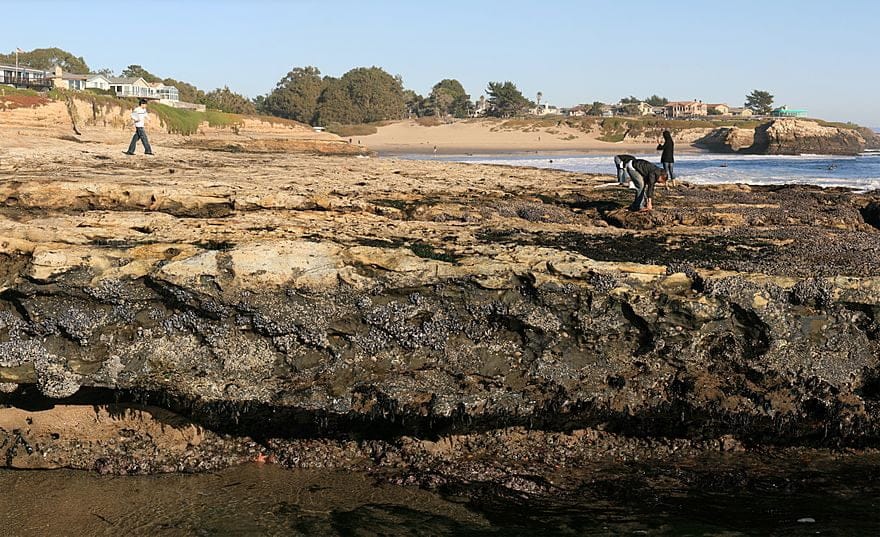
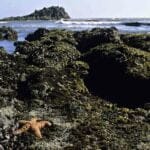

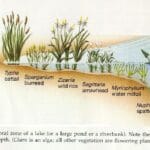
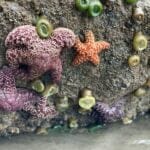
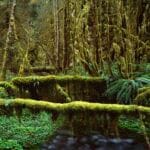
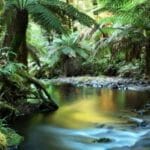









1 thought on “Unveiling the Mysteries: Fascinating Facts About the Intertidal Zone”
Comments are closed.